Review of the Month (Page 2)
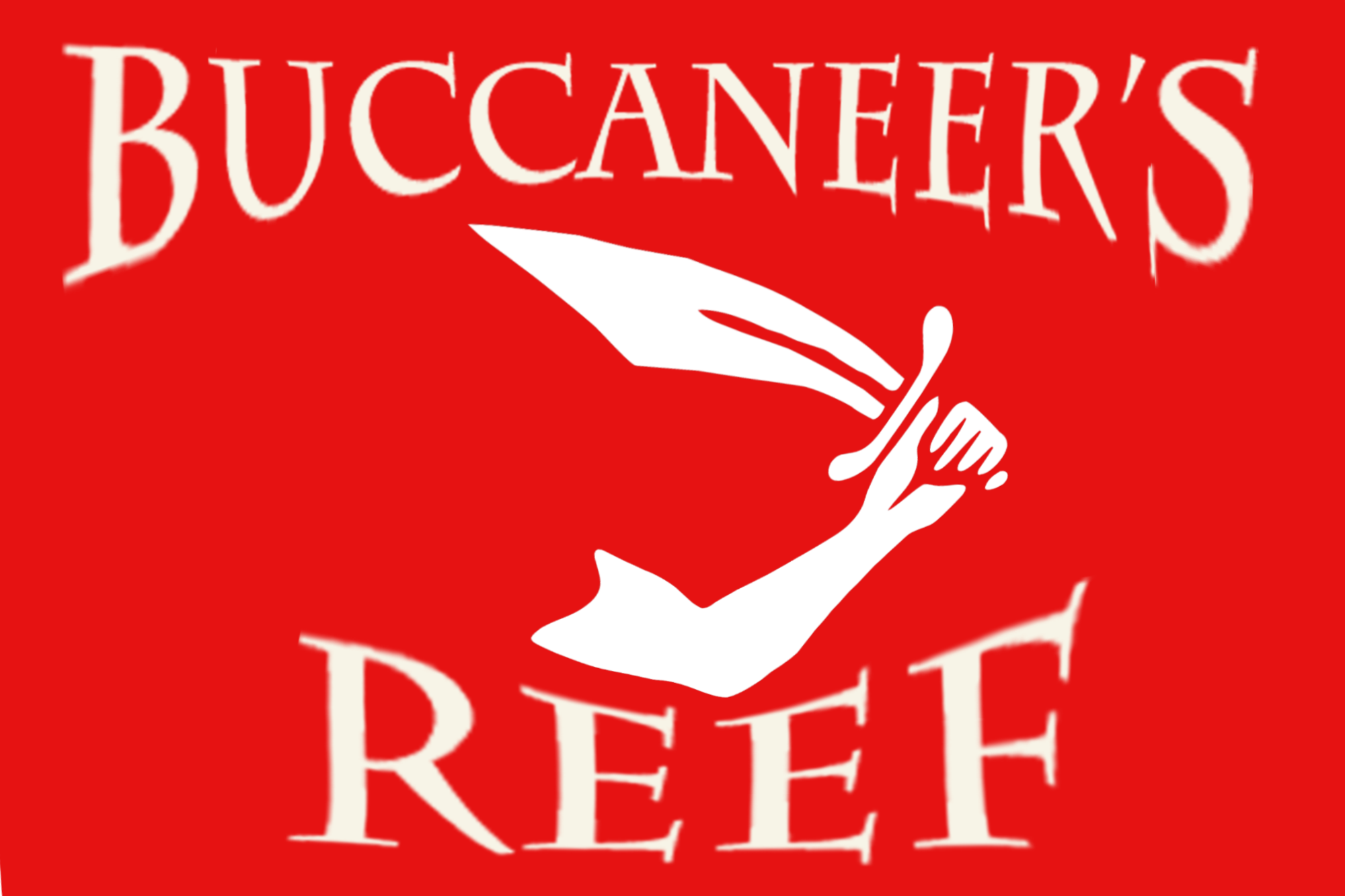
I will attempt to review a game, TV show/series, book, or movie here each month.
This month’s review is on the book: Dutch Warships in the Age of Sail 1600-1714: Design, Construction, Careers and Fates. By James Bender
I have to say that when this book was first advertised by Amazon months before its publishing date I was both disappointed and excited. For years I have been compiling my own information on Dutch and English ships of the 17th century in the hopes that one day I would have enough for a book. Now here was the book in actual real form – but I was not the author. However, knowing James Bender’s background with the Kentish Knock website and Three Decks, I knew this would be a good book – and was excited to see what he had put together. I ordered the book months before its publishing date and was not at all disappointed when it arrived.
I will start off by saying that this book is a natural companion to the British Warships in the Age of Sail books written on the subject of the Royal Navy by Rif Winfield. Those books have been a key part of my library for years and I have poured over them till they are dog-eared looking for this or that fact or ship for my research on other books/articles I am writing. Mr. Bender’s research is every bit as impressive as Mr. Winfield’s. Bender has scoured numerous archives within the Netherlands looking for every shred of detail he could get his hands on to complete this impressive and comprehensive historical record on the Dutch navy.
The lengthy introduction by J.D. Davies provides the reader with an excellent, well written and brief illustrated historical essay of the Dutch navy of the 17th century in twenty-two pages. I think this introduction is essential in setting the framework necessary in which to view the lists and resources that follow which is the meat of the book.
Bender’s narrative explanations of events and ship’s careers are well written, to the point, and usually brief and succinct. He lays the book out with ships in alphabetical order – in the beginning with compiled fleet lists of ships during every battle of the covered period in chronological order. He follows this with lists based on period and the various Dutch Admiralties (e.g. Rotterdam or the Maze, Amsterdam, Zeeland, and Friesland), the Dutch Chambers of the East India Company and Directors of cities who raised ships for Dutch fleets. The information is well laid out and easy to read with ships listed, their numbers of guns and their commanders at the time, and brief snippets of their careers.
Throughout these lists Bender provides excellent contemporary illustrations of the ships where available. Many of these are Van de Velde renderings of the ships. He follows all of this with an exhaustive master Index of ships at then end of the book in alphabetic order and dates. This is a wonderful tool allowing the reader to look up any Dutch ship they wish with references to distinguish ships with the same repeating names from one another from differing periods by date and appropriate page numbers where the listed information can be found.
Needless to say the bibliographical and archival references and acknowledgements are what one would expect given the large body of research material compiled and the list is both impressive and useful if one might wish to perform additional research on their own using the archival information provided.
In short this book is a treasure trove and a MUST HAVE for any aficionado or historian of Dutch Naval History or the Anglo-Dutch Wars. It is worth having for the illustrations alone. It is assuredly better that Bender wrote this book instead of myself, because it would be another decade before I finished compiling all of my own material and the book would be double the thickness with my own known verbose love of long and detailed historical narratives.
I have never met Mr. Bender in person but I have to say he is a man after my own heart. Not only is he an old computer scientist and skilled statistician who loves probability in gaming, he also has a soft spot for this area of history and has become an adept expert on this great era as a result.
I highly recommend this book and rate it 5 out of 5 stars. It is still available on Amazon with a price of $48.73 AMAZON LINK TO BOOK
MK
Review of Michiel De Ruyter
Well I FINALLY had my opportunity to see the movie Michiel De Ruyter (“Admiral” for English release audiences) a couple months ago. Been really busy so I am just now getting to posting the review. I can’t tell you how excited I was to finally see it!
I have to tell you that with as much anticipation as this movie has been building in me over months of waiting – added to my already strong enthusiasm stirred by a hobby consisting of years of historical study in this area, (I am an exceptionally adept expert on this particular historical period and subject) – my first impressions were shall we say….emotional. The opening scenes were not only unbelievably dramatic but extremely vivid and authentic as well.
The movie opens during the First Anglo-Dutch War and DeRuyter’s family is in a church close to the coast outside of the town of Scheveningen (possibly the village of Ter Heijde) praying for a good outcome to the battle happening right there and then – close-by off that very beach. Distant cannon fire shakes the church and even though DeRuyter’s pregnant wife asks her son to watch their two young daughters (in the church) while she goes to observe the battle from the beach, they become restless as the sounds of battle become louder. After some moments, the children moved by the noises outside leave the church and run to the beach to join their mother. This scene moved me so much because the CGI panorama of the battle off the beach was simply awe inspiring – and that I myself had brought my own wife and young children to that same beach in 1994, and described the scene they would have witnessed there – and to imagine it happening. Indeed there are paintings that I have seen in person that illustrate citizens coming out to the beaches to observe these battles.
From the beach we are transported to the Battle of Scheveningen aboard DeRuyter’s ship. Old Admiral Maarten Tromp is trapped and his ship has lost its mainmast. DeRuyter sets his ship on a course to rescue the Admiral. His ship gets there in the nick of time and repels the English assault on Tromp’s ship but not before a sniper from Admiral Penn’s ship mortally wounds the Admiral. DeRuyter boards the ship and holds the wounded Tromp in his arms before he dies. DeRuyter visibly shaken and disappointed stands and looks towards the coast where his family is watching. The camera zooms out so that the viewer can see the entire battle unfolding replete with sinking ships, ships on fire and individual cannon duels. This is where the title credits finally emerge and the music moves to a grand crescendo. What an awesome opening even though the scene with Tromp and DeRuyter never happened historically.
I do not want to spoil this movie for those who have yet to see it so that is the only scene I will describe in some detail. First I want to focus on the good, before I criticize the bad. This movie is big. It is well done and the soundtrack is stirring and dramatic. The cast is well picked. Frank Lammers not only does a convincing job of playing DeRuyter, but plays the role with care, passion, and conviction. In addition Lammers does indeed resemble the DeRuyter we know now from his numerous portraits painted by notable Dutch masters of the time. Much of this movie covers the dramatic discourse between DeRuyter and various government and navy officials as well as his family. Even though the movie is in Dutch and I had to rely heavily on the English subtitles, Lammers does a fine job and is believeable in his relationships and interactions both in personal and official capacities.
Barry Atsma and Egbert Jan Weeber both do an excellent job portraying DeWitt and the Prince of Orange. Atsma(DeWitt) does a fine job even though the relationship between himself and the Prince is portrayed differently than what history tells us. DeWitt actually personally oversaw the Prince’s education in his youth in reality. Weeber(Prince William) portrayed both his breeding and class well, and played the effeminate courtly poise and gestures required with ease. I particularly liked how when angry he shed all of the false courtly manners and acted like a man.
I was disappointed that the movie portrayed the prince as tending towards homosexuality. We know historically that some of the English lords made such slanderous smears (later when he was the King of England) because of the closeness the Prince displayed towards his best friend. However, historically we know that William enjoyed FEMALE mistresses, so I really was put off by this historically speaking. This did not add to his character or to the movie in any way.
I was also disappointed in the line between the Prince and King Charles when he tells the king that his fleet has blown the “smithereens” out of the English fleet. This word was not even in use until the 1800s, its of Irish origin and royals would have never used such language between one another. Regardless, the actors both did GREAT! DeWitt’s speeches even though in Dutch were still very stirring and I was inspired. Charles Dance also does a good job playing Charles II although I feel he is a little aged for the role. I almost hoped they would have asked John Malkovich as he played the best Charles II I’ve seen in any period movie in – The Libertine with Johnny Depp.
1) The GOOD…
The settings, wardrobe, weapons and props were mostly very good and authentic. I was very happy with the historical mood and feel the movie exudes. With the exception of DeRuyter’s dress which would have been different than the simple sailor’s clothes he is shown wearing most of the time, AND the 19th century coaches when I know 17th century carriages could have been procured, the authenticity was very good.
The CGI is fairly good. It is much better in some areas than others however. During the scene showing the invasion of Utrecht I was disappointed because it looked like only a couple of squads were assaulting – they needed more extras. Then as the camera zoomed out which was cool you see a CGI army closing in around the city. The army looked like it was out of a video game. It could have been better. During the sea battles, the actual ships Schtandart and Grand Turk (a repainted Indy from the Hornblower series) were shown over and over again. This disappointed me in that in several scenes the authentic looking CGI capital ships looked both better and more historically authentic than the real modern replicas. I thought it was a shame that they didn’t do much more with merging the CGI in these live action scenes. It was very good and looked excellent when they zoomed out to show the lines of battle.
However there were some unforgivable mistakes. The quality was not consistent. In a few scenes the CGI ships looked almost real. They were simply excellent. However in others, they looked like bad cartoons. I do not understand why more wasn’t done in the Quality Assurance in editing to get that consistency. The other problem I have is that they simply replicated a few models over and over again. Now this wouldn’t be so bad if the models had been correct. A simple study of contemporary Dutch paintings and a naval warfare expert as a consultant, would have assured this was correct. However, the later battle scenes show Dutch Fluyts (looks like the model of the Derfflinger) over and over in the battle lines. I was so disappointed in this. Small Dutch merchantmen would not only have not been present, but they would not have lasted long in that environment. What a HUGE historical mistake! The CGI could have MADE this movie. However, it fell short. The CGI in the Docema documentary “Broadside” is superior even though it is now a little dated.
2) AND NOW THE BAD….
The single worst thing about this movie was the passage of time. DeRuyter’s life was long. He was one of the longest serving admirals in history. This movie feels like the events that are portrayed and the story told, happened over the course of a few months or in a few years time at the most. The span of the movie beginning at the end of the First Anglo-Dutch War (1653 timeframe) and ending at the Battle of Agosta in 1676 is approximately 23 years. Yet DeRuyter’s family, his adolescent son and young daughters do not age a day. At the funeral scene at the end, the whole family in reality would have been adults and there would have been grand-children there. This REALLY bothered me. How hard would it have been to show time pass a little? Show the year and place at the bottom of the screen in a caption as things progressed. Show a couple of transition scenes. Get some additional actors/actresses to show the children aging and wrinkle and grey the primary actors with some make-up. Badly done – I’m sorry.
Chronology is a problem throughout the film and they mixed a lot of stuff up. In the movie the Battle of Lowestoft occurs almost right after the Battle of Scheveningen even they are battles from two different wars and happened twelve years apart. In addition it shows the DeRuyters relocating to Amsterdam after the Battle of Lowestoft when in fact they moved there ten years before the battle. Anna DeRuyter tells her husband to just go and fight when they see the battered fleet after the Battle of Lowestoft, but in reality DeRuyter was off in the Caribbean at the time of the battle kicking English butt all over the place and only learned of the loss and Wassanauer’s death upon his return to Amsterdam. It was at this point he accepted the supreme commander position. The scene with him and DeWitt discussing all the navy reforms never would have happened because those reforms were already complete by the time the Battle of Lowestoft happened.
Also germane to the chronology problem are the children. Engel DeRuyter who is shown to be the eldest was actually the youngest at 4 years old when the movie began. Anna was actually DeRuyter’s third wife and the children were from his previous marriages. When DeRuyter agonizes over all the years spent away from his wife in the movie, in actuality he had only been married to Anna for two years when the movie begins. Margaretha was Anna’s and Michiel’s first daughter together and would have been 7 months old at the start
of the film. Anna had one other child with Michiel – Anna Junior born two years after the movie’s start in 1655. DeRuyter’s first daughter died as an infant 20 years before the movie begins. His eldest son Adrian died in 1655 at age 17 two years after the movie begins. Cornelia would have been 14 at the movie’s start and Alida or “Aeltje” was 11 at the movie’s start so the daughters we see to begin with were not too far off. By 1662 during the 2nd Anglo-Dutch war we see a picture of the family together. Cornelia is all the way to the right and married to a young captain of DeRuyters Marines. The two youngest children we see in the center of the painting are hers attended to by young Margaretha.
Cast and scenes. I had a real problem with the English fleet having the same few officers in every battle throughout the film. There were many well known English captains and admirals that fought in these wars. In the Four Days Battle alone three of England’s greatest admirals lost their lives. In this movie we are treated to the same admiral in every battle. I wasn’t even sure who it was supposed to be….was he Penn, Monck, Blake, or was he Russell??? Don’t know.
While I really enjoyed the action and all the explosions and wood splinters flying everywhere, I wish they would have been more splintery looking and less wood chip looking. Still a pretty good realistic effect and they showed numerous wounded sailors with large splinters in them as has been described in contemporary narratives of the naval battles. I also got sick of seeing several cut scenes repeated. The same sailor wounded and falling and the same guy standing up to take his place at the wheel. The Wheel itself is a problem. They show a whipstaff steering a ship in one scene but then they show ship’s wheels in others. The ship’s steering wheel was not invented until 1704 so they would not have been around until 30 years after the end of this movie. How hard would it be to come up with a few additional battle cut scenes in a major motion picture rather than reusing the same ones over again. Very disappointing. Flags: another place CGI would have been useful. While the type of flags was correct, the way they flew them in the case of incorrect booms for the time rather than tafferel flag poles and hanging from the bottom of the bow-sprits was just wrong and detracted from the feel of the battles. Did I mention the CGI Fluyts? Better attention to detail and historical accuracy really could have made this picture stand out far above the rest and budget constraints would not have been an issue. I was hoping that they would have consulted with the guy doing all the fantastic artwork for ArteX ArteX http://bloodflag.blogspot.nl/ or the Docema Broadside guys Broadside http://www.broadsidethefilm.com/index.php
3) Historical events. (Comparing what really happened to how the movie portrayed what happened):
a) The first scene of the movie was flawed. It was actually Egbert Kortenaer that held Tromp before he died and I felt like the writers were trying to give DeRuyter’s character some of Kortenaer’s attributes. (Not unlike what was done with Mel Gibson’s character Benjamin Martin in the Patriot being three different people combined). Historically when Tromp was killed, the battle was not over and Kortenaer ordered that the Admiral’s red battle flag stay flying so as not to panic the fleet. Kortenhaer took command of the fleet. Kortenhaer eventually rose to fleet command from meager beginnings as a common sailor from a poor family. DeRuyter was a Commander of the Directors of Vlissengen during the battle aboard his ship the 38gun Witte
Lam (White Lamb) which he had commanded aboard for most of the First Anglo-Dutch War. *Note: During his famous engagement at Plymouth at the beginning of the war he commanded the 28gun Neptunus.
b) Later in the movie when it is showing the Younger Tromp being put forward as the next Admiral of the Dutch fleet and DeWitt wanting DeRuyter – in reality Tromp was not even a candidate. Kortenhaer was the favored candidate and DeWitt did not choose him because of his Orangist background.
c) There were numerous inaccuracies in the Medway fight. While I love that they showed DeRuyter’s Marines (some of the first elite special forces in history), I hated that it didn’t show the full scale of the operation. For one, it was not some kind of night time sneak attack as the movie showed. The Dutch had blockaded the Thames for over a month while the English sued for peace. The deliberate delays frustrated the Dutch and that is why DeWitt ordered the Medway attack to force the English to their knees. Using a disgruntled English pilot that hadn’t been paid in sometime, it took at least two to three days for the Dutch fleet to make their way up to Chatham. Indeed after the battle many English sailors aboard the Dutch ships chanted “we no longer take worthless tickets and now work for Dutch Dollars.”
During this time there were numerous fights where the English attempted to stop the Dutch. They deliberately sunk their own ships to try to delay them and set up small firing lines of frigates which the Dutch crushed. The Dutch landed troops in numerous places and terrorized the people raiding towns along the Thames as they went. Indeed as the Dutch approached Chatham they not only attacked Sheerness as it shows in the movie (they landed 800 Dutch Marines, not the little contingent shown in the movie) but they also torched the royal dockyards outside of London itself. The giant plumes of smoke from the fleet and dockyards burning caused a major panic and the English evacuated London itself and fled for the countryside. The king himself abandoned Whitehall and fled as well – SO that scene with him angry about the Dutch seizing the Royal Charles and kicking the model ship would have never happened because the King was not at his palace or in London at the time. I was very disappointed they didn’t show the English fleeing London. That would have been cool. I would have loved to have seen a brief clip of Samuel Pepys (head of the Navy board) hiding a chest of gold in his yard before fleeing – as he recorded he did in his diary.
DeRuyter’s ship did not break the boom chain protecting the Medway. It was Jan Daniëlsz van Rijn aboard the Pro Patria. I was also disappointed that they only showed small boats on fire while advancing on the English fleet and not the fire-ships and 30 large sloops that had been specially prepared for the attack. Also there was quite a lot of resistance at Upnor and larger ships specially placed to fire at the incoming assault. I would have loved to have briefly seen the fight between the Dutch Marines and the contingent of Scots Foot led by Captain Archibald Douglas who refused to give up the HMS Royal Oak, and all lost their lives before the ship was destroyed. In addition, DeRuyter and Cornelius DeWitt were not at the actual action where the English capital ships were laid up but further to the rear of the action down river. The commander of the Medway action itself where the English ships were destroyed was Willem Josef Van Ghent aboard the 50 gun Agatha. The largest Dutch ship present was Van Ghent’s 80 gun Hollandia. Van Ghent (played by Tygo Gernandt who did a fine job in the role) was shown leading the marines in the movie. I don’t think Van Ghent actually led the landing attacks but I can’t verify it.
Not only was the English flagship Royal Charles towed back to Amsterdam as a prize, but the HMS Unity(the recaptured Dutch warship Eendracht) was also captured as a prize and taken back to Holland as well.
d) The scene showing Charles’ French mistress Louise de Keroualle using her feminine charms to coerce King Charles into signing the secret Treaty of Dover(1670) to attack the Dutch never happened. King Charles did indeed make a secret agreement with Louis of France, but it was largely his own idea because he still seethed with anger and revenge for the humiliation from the loss of the 2nd Dutch War. What the movie did not show was that he secretly agreed to become Roman Catholic in order to secure the French as an ally. This would not have gone over well with England’s lords or the common people if they had found out about that simple fact.
e) It was touching to show DeRuyter rushing in to try to save the DeWitts during the mob scene, but the fact is that he was nowhere nearby in reality.
f) They completely failed to show the disaster at Terschelling with 150 Dutch merchantmen and the town torched by Holmes raid. Subsequently we never get to see DeRuyter chasing Sir Robert Holmes down the west coast of Africa to retake the forts (and slaver stations) the English had seized from the Dutch and the subsequent foray into the Caribbean with the Dutch Confederate fleet destroying every English colony and ship in sight. They also failed to show his later foray into the Caribbean once again during the Third Anglo-Dutch War/Franco-Dutch War against the French and the failed Dutch attack on Martinique. Very disappointing.
g) The portrayal of Cornelius Tromp abandoning the line at the Battle of Nieuwpoort actually happened. The forced reconciliation also actually happened. However it did not show DeRuyter come to Tromp’s rescue later at the Battle of Schooneveld (which actually really did happen at THAT time). They chose instead to show Marten Tromp the Elder being rescued by DeRuyter at the very beginning of the movie during the 1st Dutch War – which never really happened. The younger Cornelius Tromp was so moved by DeRuyters actions that seeing him approach Tromp yelled to his men: “There’s Granddad(Bestevaer)! (the Dutch sailors used this term of endearment for De Ruyter) He’s coming to help us. I in return shall never abandon him, as long as I can breathe!” I was disappointed they mixed this up.
h) While the politics of the time were fairly correctly portrayed in the movie, by the end of the Third Anglo-Dutch War the Orangists had firmly asserted their authority and DeRuyter had been a loyal and willing patriot fighting battles for the Fatherland for years. So the whole business of the Prince granting him retirement if he would go on one last campaign was just stupid. The campaign to assist the Spanish against the French was not some special suicide mission either. In reality the Dutch and French were evenly matched at the Battle of Agosta and the Dutch had a large Spanish warship fighting alongside them as an ally as well. DeRuyter did not die on deck as it showed in the movie and his leg wasn’t completely shot off. The surgeon had to perform an amputation and an aging, grey haired DeRuyter (age 63) died of infection from the amputation a week later.
i) There was a line in the movie where DeRuyter was arguing with DeWitt about the imbalance in the English and Dutch fleets. He stated that the English had more ships, bigger ships with more guns and bigger guns.
This is simply just not true at all and a little research could have prevented a bad line like that. If this line had been said at the beginning of the movie during the First Anglo-Dutch War it would have been partially true. However after DeWitt’s new naval reforms and new fleet, it absolutely was not accurate. While its true that the English did build larger warships, these 1st rates would have only made up a small percentage of the entire fleet. The Dutch enjoyed a majority of ships throughout all of the Dutch Wars, especially in ships of the 2nd and 3rd rate size (64-80 guns). The Dutch warships were known to be more seaworthy, faster and more maneuverable in combat. In addition, the Dutch enjoyed a considerable advantage in firepower. The English may have had a few more guns, but many of their guns were iron and heated up faster needing more rest or cool down time to be safe. DeRuyter himself ordered that most of the Dutch capital ships were equipped with Bronze guns that did not have this problem of overheating. In addition, the largest Dutch guns were the 36 pounder and most of their ships possessed them on the lower gun decks. The English ship’s largest guns were the 32 pounder and only their largest ships had them on their lower gun decks only. Most of the English guns were 8 to 24 pounders. So in reality the Dutch had a very marked and consistent advantage in fire power over the English throughout the Second and Third Anglo-Dutch Wars.
4) Subtitles: I have spent a fair number of years in Europe and in the Netherlands. While I cannot speak the language I do understand a lot of what is said. I am disappointed in the English subtitles as clearly they are not passing down all of the full conversations or meaning in the Dutch dialogue. I was also annoyed at some of the translation work as it showed a slight lack of understanding and context. My biggest pet peeve was when DeRuyter would say anything to his men and sailors. They used the word “guys” a couple times. An admiral would never say “Thanks guys” to his men. I believe the better translation for this would have been “boys” or even men. This will be made fun of by English audiences no doubt.
Greatest Strength (what I was most happy about):
I loved the scenes with the Republicans and Orangists in the Ridderzaal at the Hague, replete with all of the regalia I have seen in old paintings. I loved the captured Spanish banners in the room. I do wish it had shown some of them shot up with holes and burned as the old paintings reflect. I also loved many segments of the battle scenes. I was most impressed with the battle scene of Scheveningen at the very beginning of the movie. I loved Rutger Hauer’s portrayal of Maarten Tromp but was disappointed it was so short. Historically he was killed near the beginning of the battle but I hated to see such a great character killed off like that so quickly at the beginning of the movie – I wanted more. I was unhappy about Lord Keivit the Regent having such a prominent role and dialogue in the Dutch parliament scenes. In reality, he was in England during the 2nd Anglo-Dutch War time-frame because of his role in the Buat conspiracy. King Charles even made him a baronet. He was considered a traitor and had been sentenced to death. He was only invited back and his sentence commuted with a pardon from Prince William when the Orangists seized power(1672).
Greatest Disappointment:
My greatest disappointment was that they made only a half-hearted attempt to recreate the famous ship to ship duel between DeRuyter’s Zeven Provincien and the HMS Royal Prince. There is a specific sound track segment for it and it shows the CGI ships fighting in several clips from the sides, but so much more could have been done. I was hoping they would attempt to recreate the moment in several famous paintings showing this event from the sterns of the ships. Here’s the latest ArteX rendition of this event to show you what I’m talking about.
and Storck’s famous painting of it…
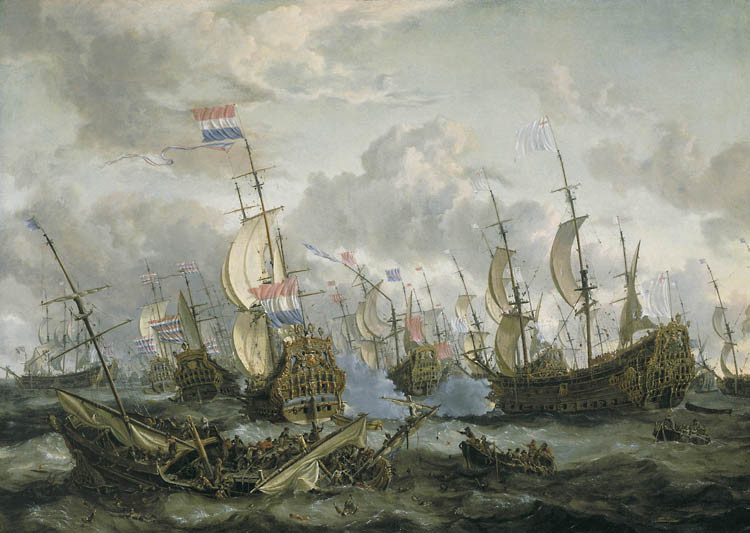
Conclusions:
Even though historically quite inaccurate and happening way too fast, this is a VERY GOOD movie. I realize they only had 2.5 hours to tell a very long story and it was a good effort. Even with all of the historical inaccuracies, they did manage to get a great many things right. It has an excellent historical feel and ambiance which Roel Reine stated was one his goals – he said he wanted the movie to have the feel of a Vermeer or Rembrandt painting and that he wanted to tell the story of the Dutch in that way. I feel he succeeded in this. If only a few dozen people are inspired to look into real history then this movie is a big winner. The visual details in this movie are amazing – a feast for the eyes. The captured Spanish flags in the Ritterzaal was just the icing on the cake. The movie is very much worth watching and I highly recommend it. I pre-ordered the English release from Amazon UK a couple of months ago even though it was just actually made available recently. It just kills me that a tiny bit more effort wasn’t put forth. Roel Reine could have been known for a masterpiece instead of a unique and new type of historical offering that was really only mediocre in the end. So much unrealized potential. Still for us historical naval and sailing ship aficionados, it does offer us a mildly good “fix”. While I enjoyed this movie very much, I feel historically speaking that the movie Broadside tells this story better. Broadside http://www.broadsidethefilm.com/index.php
Modernknight1 (A.S.)
Review of the Week BOOK:
“The Scents of Eden”
By Charles Corn
It’s amazing to think that there was once a time when pepper was more valuable than gold. Europe was obsessed by the exotic new spices coming in with the rich cargoes of inbound merchant vessels – more and more available from the far flung East Indies. These ships sometimes sailed for years on a single voyage – as explorers, traders and conquerors secured these legendary islands for western profit. The colonial powers vied for control of these rich places at the ends of the earth. Many European adventurers set out to make their fortunes in the spice trade. This wonderful book is the telling of this unbelieveable tale from its beginning up to the 19th century. This exciting history of the spice islands relives the tales and lives of the westerners who discovered and exploited these “new” wondrous places – and all of the industry, trade, and cruelty that went along with European exploration, competition, conquest, monopoly, war and glory.
“I have found a New World,” Fransisco Serrao wrote ecstatically to his friend, Fernao de Magalhaos (Ferdinand Magellan).
Well, he wasn’t actually the first to ‘find’ it. Chinese traders, Moors, and Persians had known of these places and the treacherous routes to get there for hundreds of years. But Serrao was amongst the first Europeans to come to know these islands well. Serrao was separated from the other ships in a Portuguese fleet and came by chance to discovery Ternate, one of twin volcanic cones, circled by coral reefs and forested with clove trees–‘the richest garden the world had ever known.’
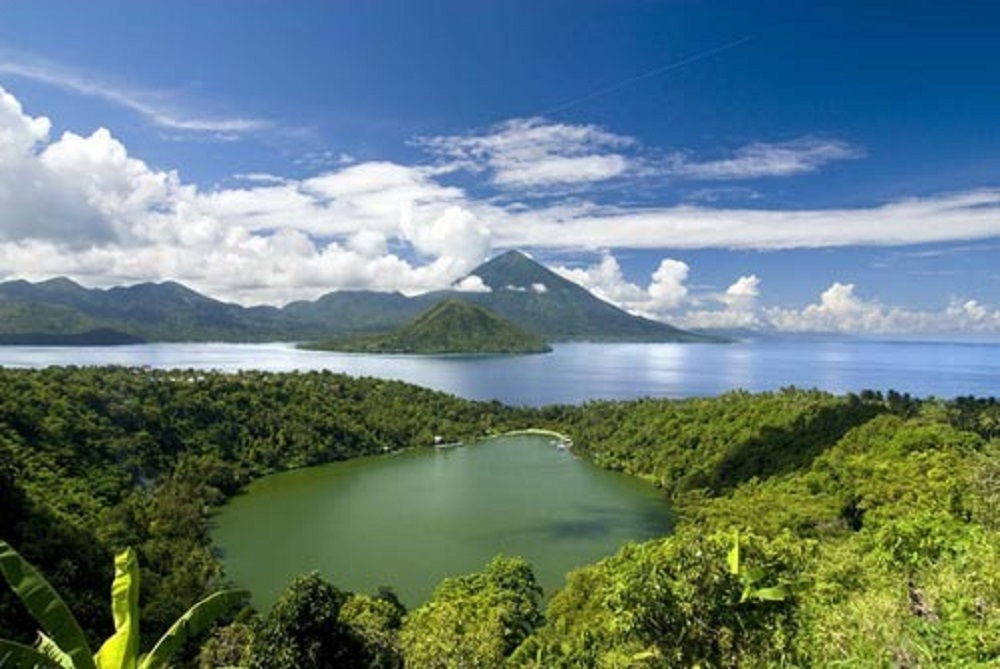
Ternate and Tidore, the enchanted spice islands.
These two friends continue to correspond and I find it amazing that their letters made it to one another in these times and from such far off places. The two separated by a worlds distance come within miles of one another approaching from opposite directions. But I won’t spoil it and tell you what happened.
Charles Corn’s “Scents of Eden” is one of the most entertaining, comprehensive, scholarly and readable examinations of trade and commerce in Southeast Asia’s spice islands that you will ever come across. I rarely read a book more than once, but I’ve read this one three times in the last ten years.
You will learn about The Moluccas (and the only passable route east and west – the Molloca straight) – a legendary archipelago of remote islands west of New Guinea which to this day grow the “holy trinity” of spices – nutmeg, cloves, and mace. The most noteworthy of these tiny islands are the Bandas.
You will learn about the tiny island of Run (which is barely more than a reef really) and a rare place where nutmeg is indigenous. The English managed to secure the tiny island much to the chagrin of the Dutch who were attempting to gain complete control of the entire area. The Dutch East India Company ruled the region in a virtual monopoly of trade throughout the 17th and 18th centuries, and exported hundreds of millions of tons of spices back to Holland – which brought immense wealth to Amsterdam – making it the “entrepot of the world”. So badly did the Dutch want this monopoly that they were willing to cede bustling New Amsterdam (now New York) in exchange for the tiny English islands of Ai and Run (and England dropping any claims to/and abandoning any colonies in Surinam) as a result of the Peace of Breda in 1667 – at the conclusion of the 2nd Anglo-Dutch War.
The timeline at the beginning of the book is a very useful reference of the region’s long history. Chinese traders explored the islands before Christ. Arab traders brought Islam during the Middle Ages. The Portuguese brought Christianity in the 16th century, and the English and Dutch were soon on their heels. Towards the end of the book you are treated to a chapter on the American attempts to get a piece of this action with Salem traders from Massachusetts voyaging to Sumatra for pepper. Their success in the spice trade created tremendous wealth in the New England port city in the early days of America’s young republic. Corn gives the reader a delightfully fascinating look at the history of the spice trade from beginning to end.
One of the most unique parts of this book was concerning the French. I believed I knew a lot about the history of the Spice trade, but this was new info for me. Corn tells us the story of one – Pierre Poivre, whose early life reads like something straight out of fiction (“The Count of Monte Cristo”). Given his name, it seems that Poivre was fated for greatness in the spice trade. Over the course of several voyages between 1751 and 1767, Poivre successfully transplanted smuggled clove and nutmeg saplings that he’d stolen from the Dutch islands, to his plantation on Mauritius (quite some distance from the Indies – closer to Africa). Poivre became a true horticulturalist, growing mangos, avocados, mangosteen, durian and other delights on Mauritius. He was also enough of a visionary to insist that seedlings be distributed far and wide through France’s colonial possessions. By the 1790s Zanzibar, Madagascar, Martinique and Grenada all had thriving spice gardens because of him – which resulted in the Dutch spice monopoly being completely broken.
I loved this book and could not say it better than Amazon: “The Scents of Eden” regales us with memorable tales of corrupt European adventurers and enigmatic island rulers; with explosive battles fought between islanders, explorere, and pirates; with deadly sea voyages; and with some of the most colorufl characters in history. it brings to life men like Ferdinand Magellan, who in 1519 embarked on a voyage seeking a shorter sea route that would shrink the world; Jan Pieterzsoon Coen, the ruthless, cruel governor-general of the Dutch East Indies, who ordered a wholesale slaughter of islanders to maintain Holland’s spice monopoly; Pierre Piovre, the French smuggler of clove and nutmeg seedlings whose acts altered the balance of power of European nations; and erect, bluejacketed Jonathan Carnes, the Yankee trader who in 1797 brought the first great wealth to a modest New England port.Drawn from first–person accounts and contemporary books and journals “The Scents of eden” spans four centuries, weaving an intricate story set on a global stage. Arrayed with famous and obscure, noble and venal players alike, the narrative is a fascinating story and a magnificent epic.”
I highly recommend this book and it is in my top ten. To get a copy go to Amazon HERE: Amazon: The Scents of Eden
…and if you are interested in other good reads from my library go here: MK’s Reading List
Happy Reading All!
MK
Review of the Week
Caribbean!
There are a lot of Age of Sail games under development right now. In fact in the last year and a half they seem to have exploded onto the scene everywhere even though none of them are ready yet for prime-time. I myself, even had a mature proposal prepared with storyboards, GUI layouts, a DEV team, and about half the backing I needed to make a go at it myself. It was all of this sudden competition that killed my plans – and my backers decided to go in a different direction for that specific reason – Too many pirate-like games in development. Very demoralizing year for ole MK because mine would have been the best and most historically authentic.
Even with all of these exciting prospects in the works, there is a significant downside.
Unfortunately for the swashbuckling aficionado and Golden Age junky, only one of these games is actually set in the Golden age with all of the great wars and pirates, and personalities we’ve come to admire, love and hate.
The free Indy game that’s being worked on by PA! is set in the 1750s – A quarter century AFTER the Age of Piracy had come to an end. It’s set in a time that saw some very exciting conflicts on land with the brilliant maneuverings of the illustrious Frederick the Great and the mildly expansive land conflict of the Seven Years War. However, at sea, it was a very boring era with only the exploits of Anson to spur any interest. No large naval battles, no pirates, and no players on the game board really except England and France at sea. Very sad indeed.
They say they will develop other scenarios and periods after their first version is finished. I can’t help but be skeptical. If they are able to keep a full team together capable of actually finishing the game – that will be a miracle in itself. I have a lot of experience in development and managing people and all it will take is for one or two key people to lose interest or get mad about something and there goes the whole thing.
If they do manage to finish the first version I very much doubt that they will actually have the energy or interest to build onto the game in other time periods. My guess is that they will continue to add to the research and the immersion of the world they already selected to build in to begin with. OR a couple of individuals that are skilled with modding will make a version set in Napoleonic times because that is the time period that seems to be so popular these days, although I still do not understand why.
Speaking from my military experience, I think a lot of players of wargames enjoy the antiseptic look of neat and tidy uniforms all in line and the very antiseptic clean sleek organized and developed ships of the later timeframe. I think its a mentality really rather than an understanding of the much more climactic, wide-spread and total-warlike history of the 17th century over the much more tame and mild 18th century, which was really recovering and consolidating power – cleaning up the huge messes left over from the unbelieveably bloody carnage of the previous century’s wars.
The 17th century on the other hand – is not a clean and organized or antiseptic setting in any way. Armies, navies, officers and ships alike had a dramatically non-uniformed appearance. Uniformity is only found rarely in elite units and organized weapons/building programs. In short, the 17th century is chaotic —- and most military types or
control types prefer uniformity over chaos. At least that’s the only logical explanation tied together with a sucking lack of historical knowledge – that I can conclude are the reasons behind my question and the current developmental state of all these offerings. Oh yeah, that and all of the movies and novels currently available in that later timeframe which is your average Joe’s exposure to history.
However, there is a glimmer of hope for those of us that want to play a game actually set in the Golden Age! – that is fairly historically correct and HAS PIRATES – real actual historical pirates – NOT Disney POTC or Pippi Longstockings Pirates. That’s right, I’m talking about Caribbean! being developed by Snowbird Game Studios. Besides my GOF: ERAs Mod2, the new and exciting game Caribbean! is the ONLY current historically authentic offering set right smack dab in the middle of the GOLDEN AGE!
Caribbean! is going into its final stages of alpha development into beta now. The alpha has been available on Steam for several months and the DEVs are listening to the input of the players. For those of you who haven’t been following Caribbean!, it is derived from the extremely popular and unbelievably FUN Mount & Blade: Warband series of games. If any of you have played the Nova Aetus mod with actual ships and boarding – or have played the Viking Conquest DLC – combine those capabilities with the armor, weapons and settings of M&B: Fire and Sword (Thirty Years War) and you have Caribbean!
Already, Caribbean! is a freakin GREAT game. It takes all of the excellent dis-mounted and mounted combat controls already available in Warband and adds to them. Firearms were only ever available in Mods (or in Fire & Sword), but you have your choice of dozens of Dags, pistols, Wheellocks and Flintlocks in Caribbean! For goodness sake you can even buy cannon and recruit gunners. You have the first person option with cannon to aim and shoot them yourself – great fun!
The DEVS are coming up with all kinds of neat options for adding capabilities to and customizing your ships although a couple of them are not historically correct for the time. The towns/cities all have the low Vaubaun-esque fortifications found at the time, and a big difference in siege battles between the Medieval M&B world and Caribbean! is that these walls have cannon mounted. In the towns there are a wide variety of different troops you can recruit which is SO COOL! If you belong to certain factions you can recruit their “Continental” troops which are basically Professionals from Europe and consist of heavily armed Infanty, Pikeman and Cavalry. They are correctly armed, armored and classified which I found amazing. From Ruiters, to Currassiers, to Tercios, to all manner of different types of Musketeers, Pistoleers, and rogue soldier types – they’re in here! In addition you can recruit local soldiers and militia type troops. This makes both land and sea battles so much fun.
There are literally hundreds of actual historical personalities in Caribbean! I can talk to Morgan or run into DeGraff or fight alongside Monck or DeRuyter. Its awesome! There are tons of new swords, weapons and firearms along with armor and helmets which were still widely used during the Golden Age! ARMOR equals COOL!!! For that reason alone the 17th century rocks! Armor had been relegated to the rare breastplate and mostly small decorative gorgets in the 18th century…blahhh.
The strong point of this game (and the reason to play it) is for the 1st person battles. If you want to play an authentic looking 17th century battle, Caribbean! is the game for you. But there’s more – the highlight of all battles in this game is that you can board ships in real time. Its not some transition screen like in so many other games. You can actually swing over on lines or cross the distance on boarding ramps to fight the enemy on the attacking/defending ship. You can actually climb into the rigging! Unfortunately so can enemy sharpshooters. I have been brought down many times by enemy snipers in the crows-nests. You can also plan your sea battles by choosing what part of the ship you want to be at when the action starts.
On the downside there are still some problems with Caribbean!
– TOWN SETTINGS: The town settings are all the same currently. I’ve heard they are developing
towns and I hope that’s true.
– TRADING: The trading interface is clunky. It needs to be updated as in the AOP series with
products and prices from different ports that you’ve visited – so that you can easily look at all
that information before deciding to buy or carry cargo from one place to another to make a
profit. A lot of work to do here still and I know they can do better. I do like the controls for
exchanging items and how fast you can buy and sell cargo though. Very quick and easy!
– SHIPS: The ships are limited to only a dozen or so models. Now on the good side there is a
variance of classification and capability within each model type – but its still really
disappointing. A 3rd, 2nd or 1st rater all might look exactly alike and exactly like a Manilla
Galleon. From the outside they look the same but they do have different speeds, crew size, hit
points and numbers of guns, —- but they all look exactly alike. NO!!! To me this is the biggest
problem with this game. For a ship lover like me, each ship types should have its own distinctly
different model and even possibly different varieties of models within each ship-type (like it is
in GOF:Eras2 with over 400 ships available).
– SHIP COMBAT: Ship combat has improved a lot since the earliest releases of the alpha. It is
much more smooth now. However, it is still somewhat “toyish” looking and the cannonballs are too
large for the ships somewhat like in Sid Meiers pirates. In fact the naval combat looks a lot
like Sid Meiers Pirates, but without the land masses and an ability to control fleets of five
ships in each engagements. That is another disappointment. I was really hoping for fleet control
like in Empire: Total War – not just limitted to a squadron of five ships. Still it is a lot of
fun to play the sea battles, even as toyish as they might look. They do look tons better than a
lot of the Naval and Pirate MMOs that I’ve seen the last few years. POTBS is the exception. POTBS
has superb looking battles.
– Tactical Contol: It is really a shame the devs did away with the troop controls of traditional
M&B. By selecting units in differing categories one could use very simple commands that we were
all used to and familiar with. Like Archers hold here. Infantry charge. Cavalry follow me. These
controls even allowed you to tell units to use specific types of weapons at specific times. The
DEVS are tinkering with a tactical field control map and its a clunky and amateurish attempt at
best. I am very disappointed here. Tactical control does not need to be complex or convoluted. It
should be straightforward and easy. I wish I were on their team. I could build them something
much better.
– QUESTS: No quests yet…although I am being told that there will be all manner of quests when
the game is finished.
Here’s the web-page for SNOWBIRD: Caribbean! DEV Update
Take a look at their current development update.
Anyway that’s about all I have to say about it right now. Take a look at the screenshots I’ve put
together over on FLICKR:
And take a look at this short video of a boarding engagement. MK
https://www.youtube.com/watch?v=ElH639nTxM0&list=UUZQ6JDN80rNKOZJgiCfXCbQ
Review of the Week, 28 December 2014: Alatriste
modernknight1, May 8, 2012
There is always a certain joy in finding something rare and wonderful. It seems like the only really good writing and historically interesting offerings these days are found in television network series. HBO’s series are some of the best and most entertaining out there and other series producers like A&E and STARZ with their new Sparticus serials, have also been producing admirable offerings. Stories produced however for the small screen and home viewing.
I have come to have such low expectations of Hollywood and the American cinema’s shallow offerings these days, that when a movie of rare and perfect authenticity DOES happen to come along, I know it has to be from another source. ALATRISTE although owned by 20th Century Fox is such a movie. The distribution rights may have been purchased by Fox, but it was made for Spanish/Latino audiences and filmed in Spain and Portugal, in Spanish, directed by Agustin Diaz Yanes. The DVD options allow the movie to be played in Spanish or Portuguese and with English or Portuguese subtitles. The English subtitles are not always a fully accurate translation of what’s being said and they sometime flash by a little too fast, but this is easily forgiveable considering the fullness and richness of this breathtaking film. The film was made six years ago in 2006, but I just learned about it last year – and what a wonderful discovery it is!
Based on the novels written by Arturo Perez-Reverte, “The Adventures of Captain Alatriste”, the movie presents the story of a hardened Spanish veteran of The Spanish Empire’s wars of the first half of the 17th century (primarily the Thirty Years War/Dutch Revolt(80 Years War)). Captain Diego Alatriste is a leader of men, a skilled and elite swordsman, and a famous soldier and specialist. The versatile actor Viggo Mortensen of Lord of the Rings fame (Aragorn), plays the main character.
The movie opens with a historical narrative over a parchment map of Europe, focusing on Flanders and taking a view of the situation that the key to continuing Spanish global dominace was dependent on putting down the Dutch revolt. The viewer is transported to the watery battlefields of Flanders. The Dutch would often break open the dykes to flood the lowlands, preventing invaders from effectively maneuvering, and providing an excellent first line of defense as well. We first meet our protagonist slogging up to his armpits in this muck. Alatriste and his elite party wade through the water, up to their chest, holding their matchlocks and smoking firing cords above their heads. Alatriste leads a daring pre-dawn raid on a Dutch encampment with the objectives of freeing a captured Spanish grandee, and spiking as many Dutch cannon possible while withdrawing. While the objectives are successfully achieved, most of the Spanish soldiers in the raid are killed by pursuing Dutch soldiers in a brutal and bloody portrayal of covert warfare. Alatriste’s old comrade Lope dies in the fray and with his last words he asks the captain to vow to raise his son Inigo.
Although his parents wished Inigo to be a scholar, he wishes to be a soldier. Alatriste attempts to force him to study, but he is more interested in fighting. Inigo meets a young girl who becomes his life long love interest, but she is of noble blood and as a result both Alatriste and Inigo become involved in conflicting secret intrigues that originate at the highest levels of the Spanish Empire. Alatriste finds himself in a similar position in love with the famous actress Maria de Castro. However, he is forbiden to see her and even though he crosses the count he saved and is embroiled in fiersom dueling trying to find out why, he is finally reluctantly placated when he finds out that her unwanted lover is the Emperor himself.
One of the jobs Alatriste is called to perform is to kill two important travellers entering Madrid. He is paired with an assassin and brutally efficient Italian swordsman Malatesta, who becomes his nemesis. The unlikely duo are employed by the leader of the Inquisition himself. Alatriste’s refusal to kill the travellers puts him at odds with Malatesta, but the Italian backs down and disappears into the shadows. The good captain’s refusal to kill was for no other reason than it just “didn’t feel right”. It is learned that the travellers are the Duke of Buckingham and the Prince of Wales from England secretly travelling to discuss diplomatic matters with Count-Duke Olivares (the despised and real power behind the throne – much like Richelieu in France). Olivares himself summons Alatriste to see him. Olivares sends him on a strange and dangerous mission to transfer gold from a Flota galleon over to an awaiting Dutch ship. It ends up being a trap and a fiersom fight ensues. Alatriste finds himself sent back to Flanders because he knows too much embarrassing knowledge about the corrupt inner workings of the Spanish government.
In the meantime Inigo has grown up, and although a good scholar, he ends up an accomplished soldier and swordsman just like his godfather. During the course of the movie both godfather and godson are almost fatally wounded in duels and saved by one another. Inigo is jilted by his noble lover who chooses the count over him and is regretful of it ever after.
During the movie the viewer is treated to most wonderful backdrops and atmosphere. I was amazed to witness a live portrayal of the Surrender of Breda and then a short time later get to see the large painting of the event unveiled by the famous painter Velazquez.
The movie ends at the Battle of Rocroi – the first battle in history where firearms were THE overwhelming decisive factor in victory. Alatriste is in command – with all other leaders dead, and goes to parlay with the French. The French commander commends the Spanish for their bravery and gives them terms allowing them to leave the field in honor with their banners and standards. Alatriste replies that they are Spanish Infantry and therefore cannot abandon the field. A French cavalry charge against the Spanish pike/musket tercios/schilltrons results and that’s where the film ends.
This film is opulent. The casting is excellent. The backdrops are beyond authentic and wonderful. The costumes are incredible. The plot and dialogue flows well and the English speaker almost forgets the subtitles while being sucked into Alatriste’s reality. The sword play in this movie is beyond belief. As a connoisseur of the swashbuckler genre of films and the proud owner of an extensive and ecclectic collection of them which is beyond the norm, I can honestly say that Alatriste offers some of the best sword play ever recorded on film. It is nothing short of BRILLIANT!
As a historical mavin, I usually find a dozen defects of authenticity in any historical film within the first ten minutes. I was hardpressed to find anything wrong in this movie in its entirety, and can say it is one of the best I’ve ever seen as far as historical authenticity is concerned. The only dissappointments I really had was that I would have liked to have seen more computer generation used. It was there, but could have been greater. The raid on the ship could have shown it from a distance. At the Battle of Rocroi there should have been many more soldiers and denser formations. A little computer assisted generation could have easily augmented these shortcomings.
I highly recommend this movie and will watch it many times to come. The movie is available on Amazon. So go order it NOW. Seriously, you wont regret it!
Modern Knight
modernknight1, May 8, 2012
See the YouTube movie trailer below…
by modernknight1 with no comments yet.
Pingbacks & Trackbacks
Leave a Reply
You must be logged in to post a comment.
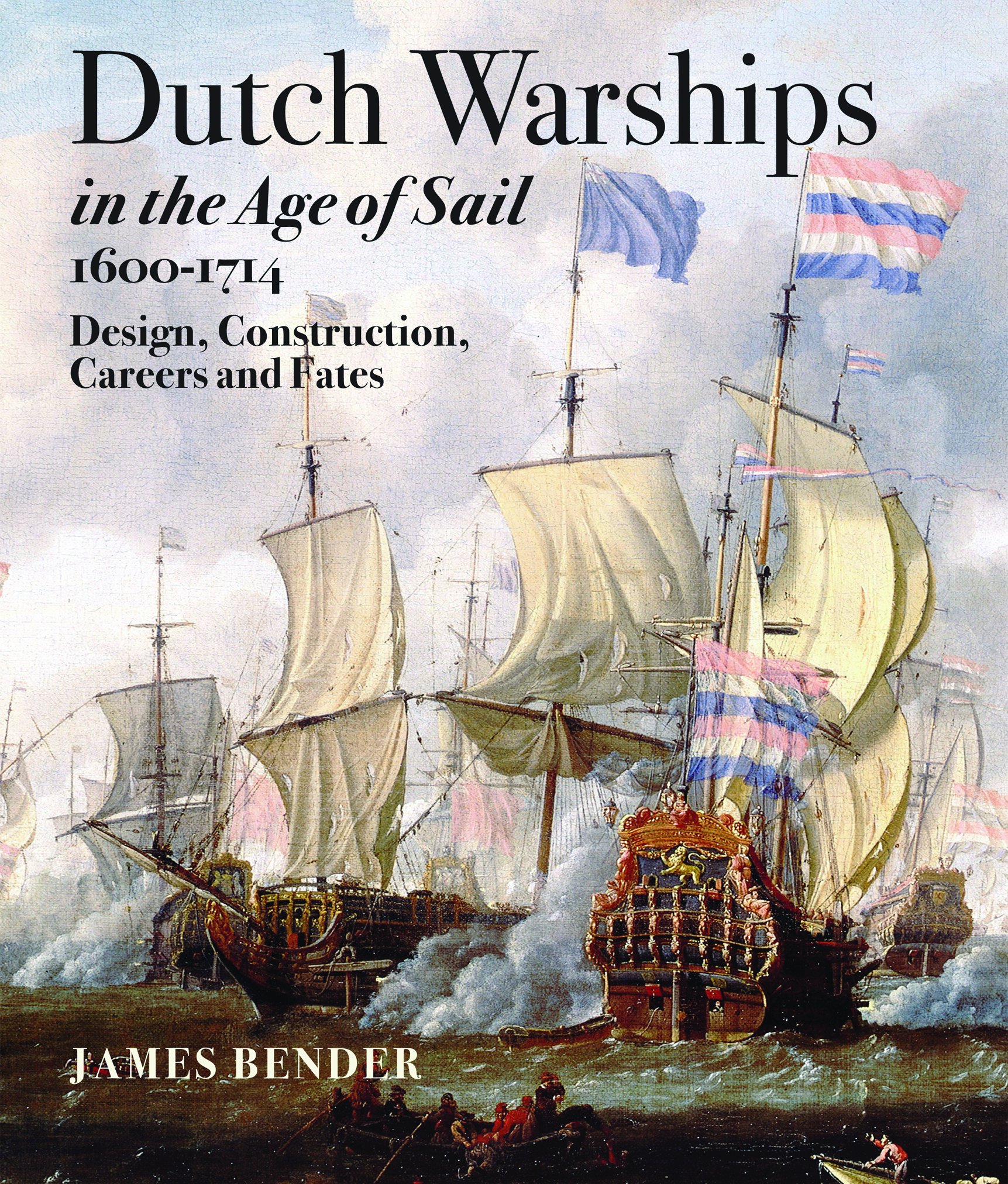
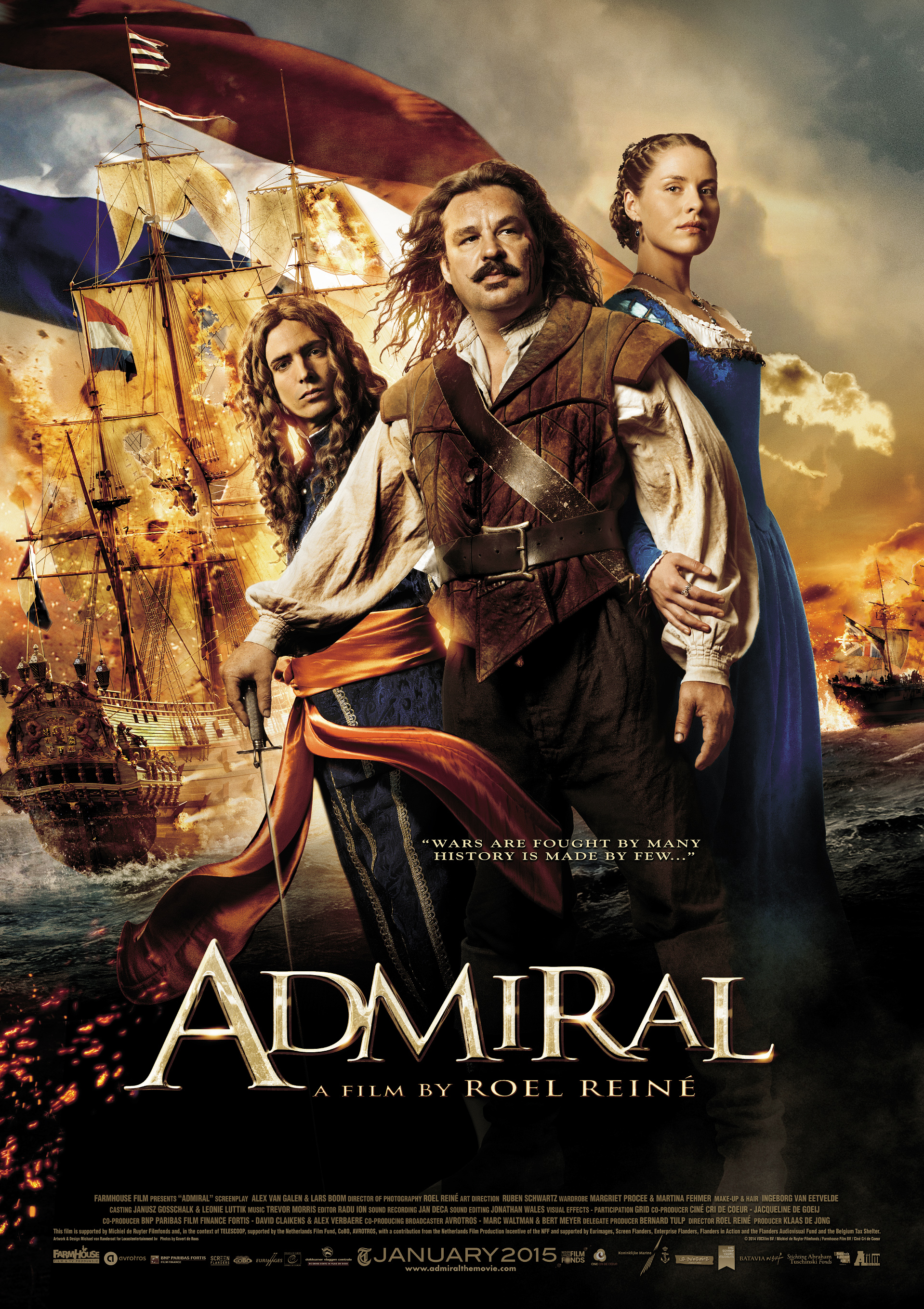
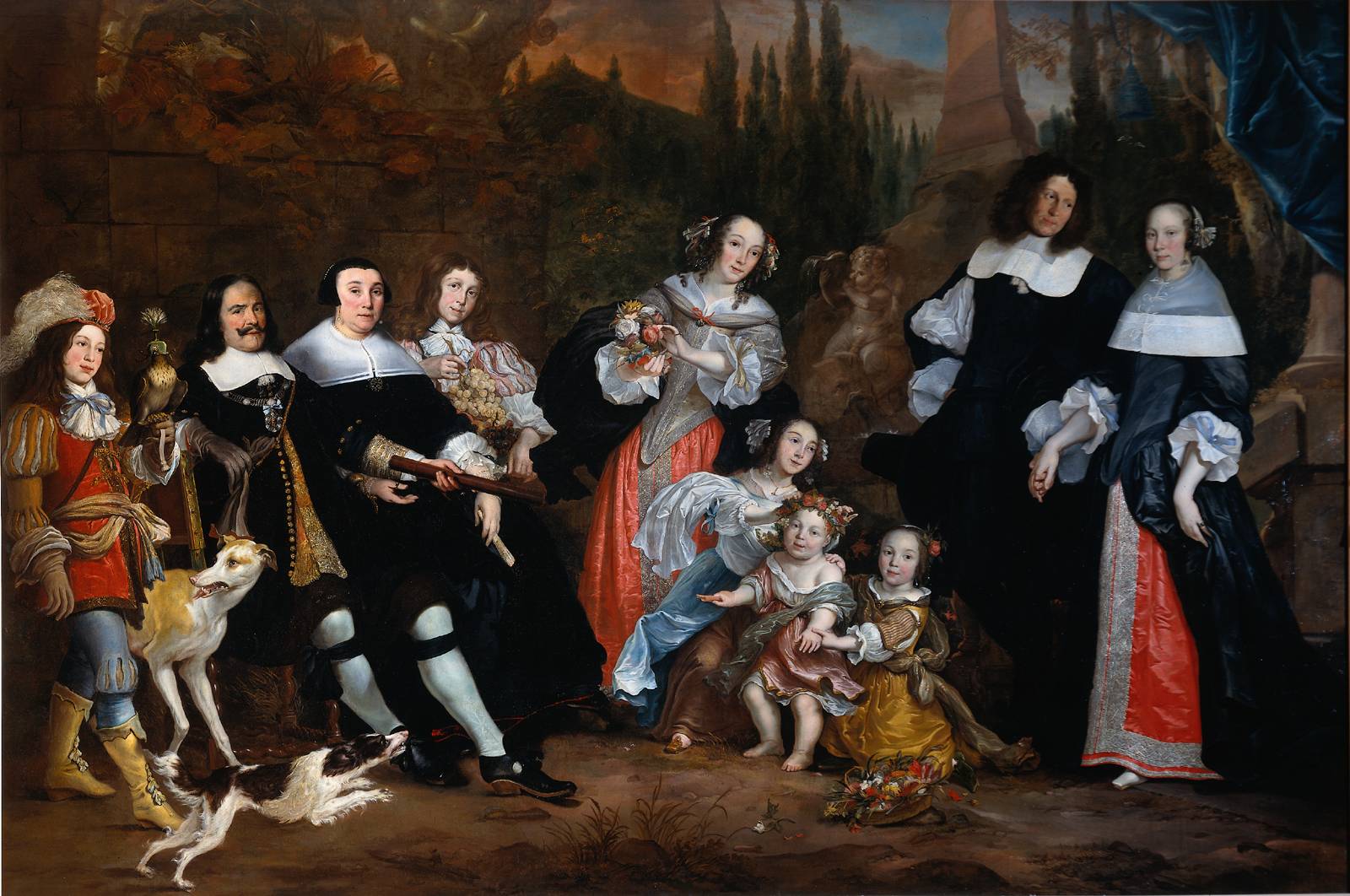
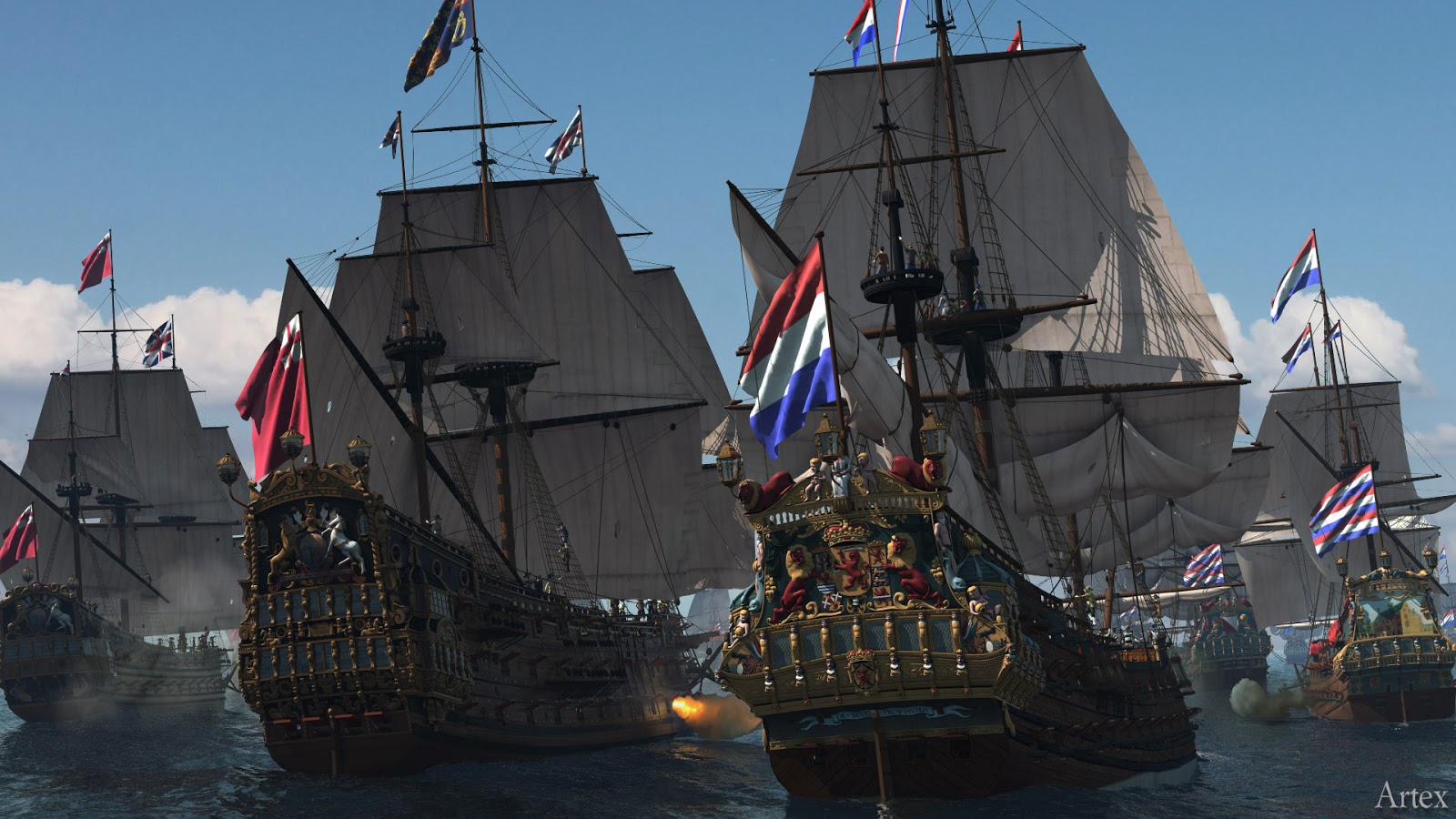
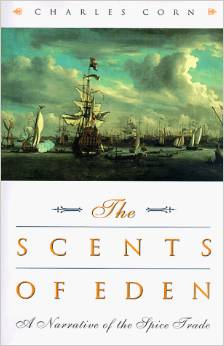

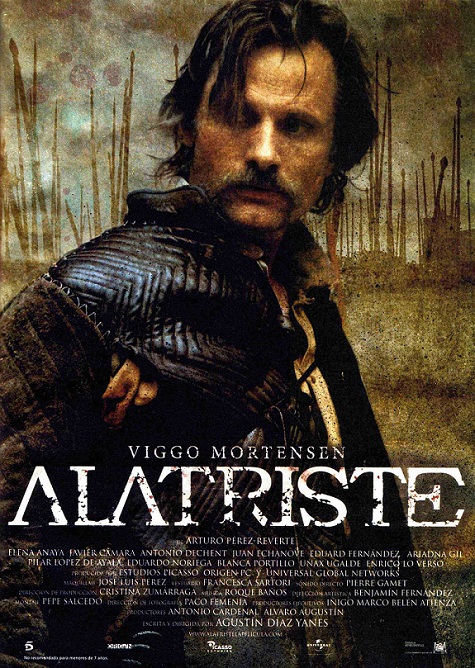
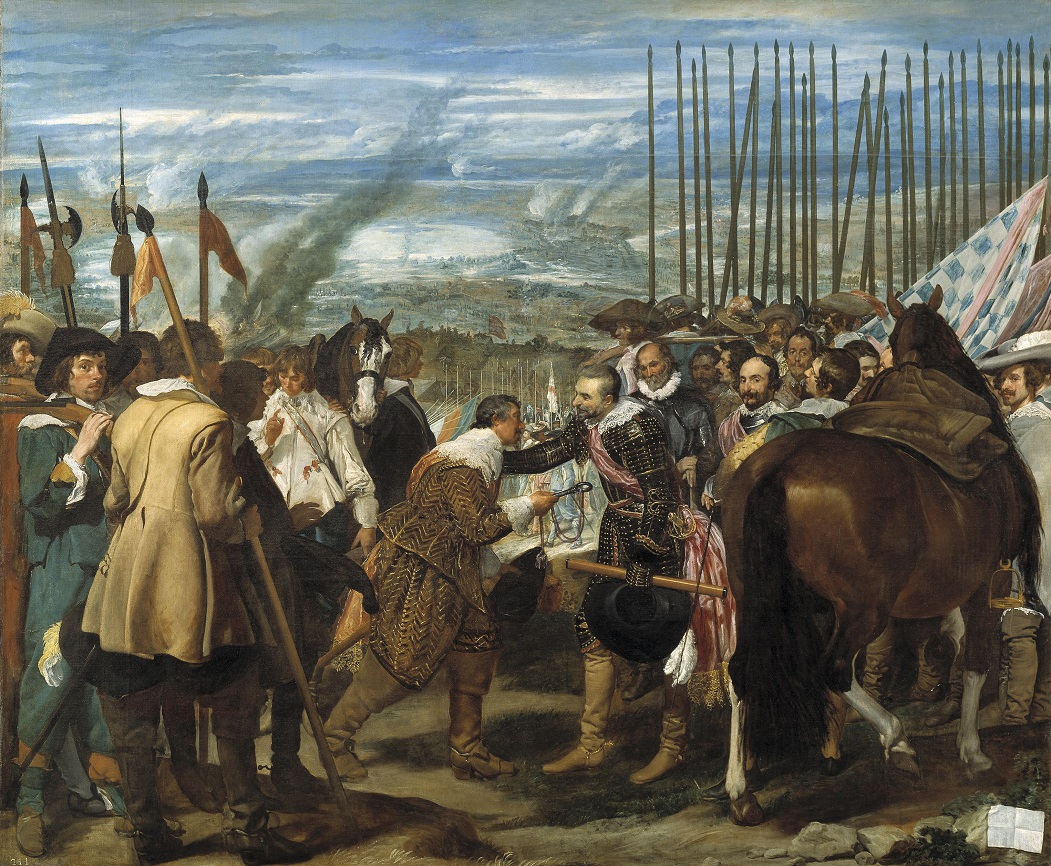
how to generate high quality backlinks
opjtgrzrm mvrvi mnorttt mnkm pzqdgdfoujezqoq